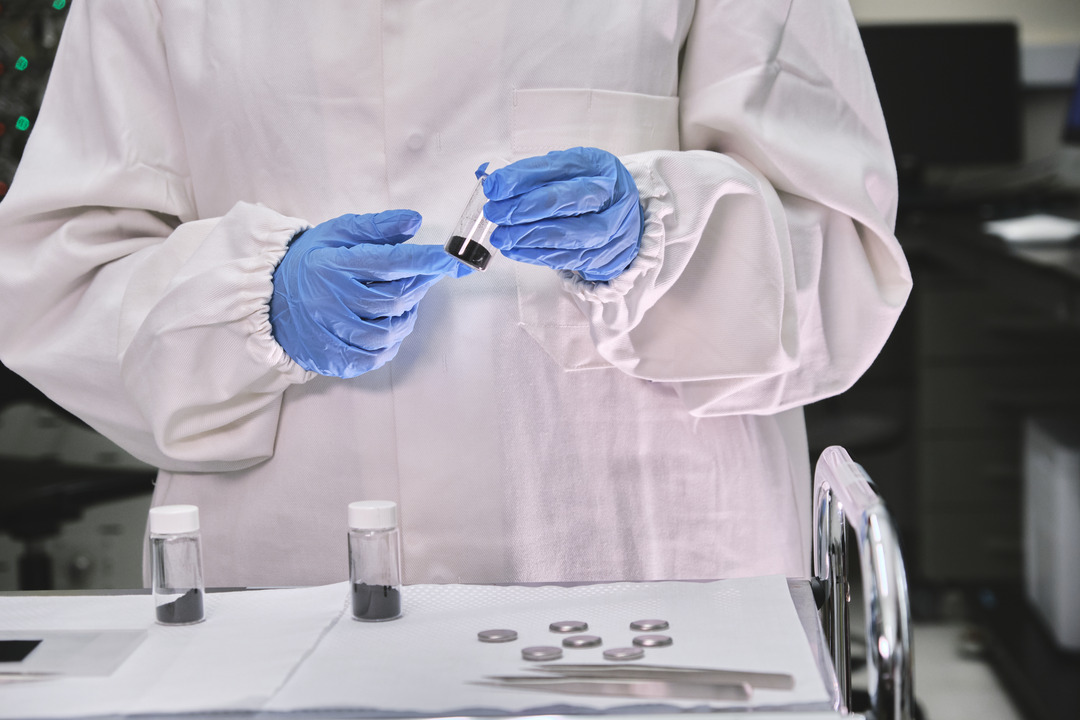KAUST Insights for energy storage: Power network turns waste into treasure

Forging good connections could be the key to building a reliable electricity grid powered by renewable energy.
KAUST energy materials researcher, Husam Alshareef, has teamed up with his former student, Nuha Alhebshi, to develop a low-cost battery technology made for grid-scale electricity storage. The battery is made using abundantly available waste materials.
“When we talk about carbon waste, many people think about CO2, but there are other forms,” Alshareef explains. Burning fossil fuels produces a solid waste called fly ash. “Millions of tons of this material have been thrown away, buried in the desert,” Alshareef says. “We have been trying to find value for that kind of carbon, to put it to practical use.”
Alshareef heard about the potential of fly ash while discussing possible topics for research collaboration with Alhebshi, now an associate professor at King Abdulaziz University (KAU). “They were already exploring fly ash for various energy storage applications,” Alshareef says.
Fly ash could potentially help solve one of the biggest challenges in decarbonizing the electricity grid. Wind and solar power are intermittent, and so must be harnessed by an energy storage system. But lithium-ion batteries are too expensive to deploy at the scale required in a fully renewables-powered grid.
“Our focus is on sodium-ion batteries, which are thought to be safer, less costly and more environmentally friendly than lithium-ion batteries,” Alhebshi says. If the sodium battery’s carbon electrodes could be made from a waste material, such as fly ash, the batteries could be made cheaper still. “We had collected some fly ash produced by Saudi factories and studied its physical and chemical properties,” she says.
“Our partners at KAU have significant experience with this material, so we already had data on what it was made of, and what contaminants it contained, which helped us develop the chemistries to purify it,” Alshareef says.

A key step is to remove trace metal contaminants from the fly ash before it can be used as an electrode material.
“Once we purify the carbon, we use thermal treatment to engineer its structure, which is what we are good at as material scientists,” Alshareef says. “At KAUST we have the right tools, the right people.”
“In cooperation with KAUST, which is recognized for its formidable expertise at power storage research, we processed and refined the fly ash to boost its conductivity, and increase its surface area,” Alhebshi says. The team successfully developed a fly-ash-derived carbon electrode material. “We already have very good data to show this is already competitive with products on the market,” Alshareef says.
These carbon materials are not only potentially useful for batteries, Alshareef notes. “By engineering their structure, you can use them for many applications, from electrochemical capacitors to salinity gradient energy-harvesting devices – a sort of seawater battery,” he says.
“Developing renewable energy resources is one of the pillars of Saudi Vision 2030,” Alhebshi says. “We hope that our research will enhance the performance of electrochemical energy storage tools, using carbon-based materials that are abundant in KSA.”
Working with Alhebshi and her KAU colleague, Numan Salah, significantly accelerated the project, Alshareef says. “By reaching out to other universities in the Kingdom and leveraging their expertise, we can bring multiple skills together, which can always more effectively solve a problem.
“Going forward, we need more of these collaborations,” Alshareef adds. Many former KAUST students now work in battery research in academic institutes across the country, he adds. “I would like to continue to work with them and help their own groups to increase their contribution to the Kingdom.”

